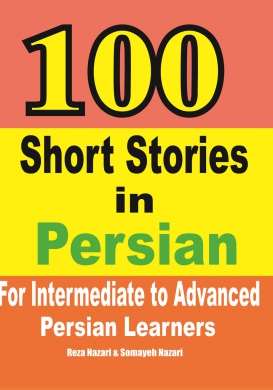
Life for Iranians would not be possible without fluent Persian as this forms the basis of almost everything they do. This is certainly the same for your mother tongue and country, but do YOU really NEED Persian? If the answer is “yes” and you have a strong desire to become fluent, then you need to make more time for Persian in your daily routine. In other words, you have to introduce some changes to your current lifestyle in order to speak more fluent Persian through regular contact with the language. Here are 5 good tips to help you get started:
Best Farsi Learning Resource!
1. Make time for Persian

Let’s face it: even with the best intentions, one of the hardest things about learning Persian is making time for it.
Actually, the first step is really about finding time to study. Whether you decide on 15 minutes a day or a few hours a week, it’s important and necessary to strike a balance between what’s manageable, and realistic, and what won’t make you suffer from burnout in the long run.
2. Find some study buddies

Involve those around you in your efforts to become more fluent in Persian; ask them to help you practice, test your Persian vocabulary, or correct your writing. Those who are close to you can play an important role in supporting and maintaining your new “Persian lifestyle”. However, also be aware that some could resent your time being spent on Persian so may try to prevent this positive change.
3. Set realistic goals and allow adequate time for improvement

Many learners set unrealistic goals for themselves, fail to follow their own study timetable, and are then disappointed by the end result. Be careful, do not let yourself fall into this trap!
Online Farsi courses on YouTube:
- Easy Persian Grammar: A Perfect Handbook of Contemporary Persian Grammar (Beginner to Intermediate)
- Top 1500 Persian Words: Essential Words for Communicating in Persian
- Top 100 Farsi Words: Most Common Farsi Words You Need to Know
- 3000 + Most Common Persian Phrases
- 200 Absolutely Essential Persian Verbs
4. Keep your eyes on the prize

Speaking of goals, one big challenge when learning Persian(or any other language, for that matter) is staying motivated.
Even with the best of intentions and optimism, your progress might on occasion slow down.
Then what happens? Your enthusiasm wanes. You find your Persian learning routine increasingly tedious.
So here’s our suggestion: think about why exactly you want to learn Persian. Keep a note of it and keep the note on you at all times. It’s good because you can look at it whenever you’re not feeling Persian.
5. Remember that fluency in Persian is a “percentages game”

Accept that you may never become a native Persian speaker, but that this is not the goal. You should work towards improving your respective skills step-by-step over time. It is unlikely you will ever gain a 100% native Persian accent, but perhaps 90% would be enough. Keep your goals clear in your mind – for example with the accent, the main thing is to be understood by everyone and that means clear, standard pronunciation with minimal confusion between similar sounds. This principle also applies to your other Persian skills.
6. Please visualize your progress to appreciate what you have achieved so far

Motivation usually comes from seeing the result of your efforts. Testing your skills from time to time can help you visualize your progress so you feel positive about your Persian. For example, try setting yourself a 20-30 word/phrase test at the end of each week or each month. A larger vocabulary makes understanding the language a lot easier and also helps you speak Persian more fluently.
7. Look at the big picture

So you’ve set time aside for your daily or weekly Persian studying session. Great!
The next important step is to decide when you think you’ll achieve your end learning goal.
Timelines will vary, depending on the language learner.
Maybe you want to cram and study intensively for 6 or 7 months? Or maybe you want to take your time and give it a couple of years?
In fact, that’s not something the method can decide for you: you’ll have to set long-term goals as well as short-term ones.
8. Connect your existing hobbies and interests with Persian

Persian is never boring if you study with material that is relevant and interesting to you. Please take a piece of paper and write down a list of all the hobbies and interests that motivate and stimulate you in your daily life. Now think of ways to connect each of these with Persian. For example, if you love tennis and read about this sport in your native language each week, stop doing this and start reading in Persian.
Special Offers!
by: Learn Persian Online Team about (category: Blog)

















What people say about "How to Practice Persian Daily?"?
No one replied yet.